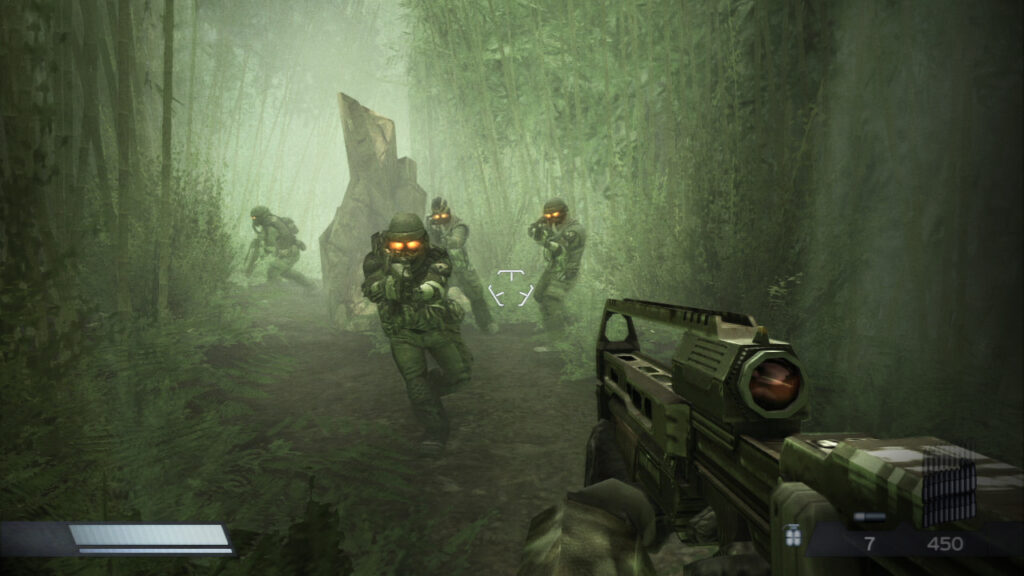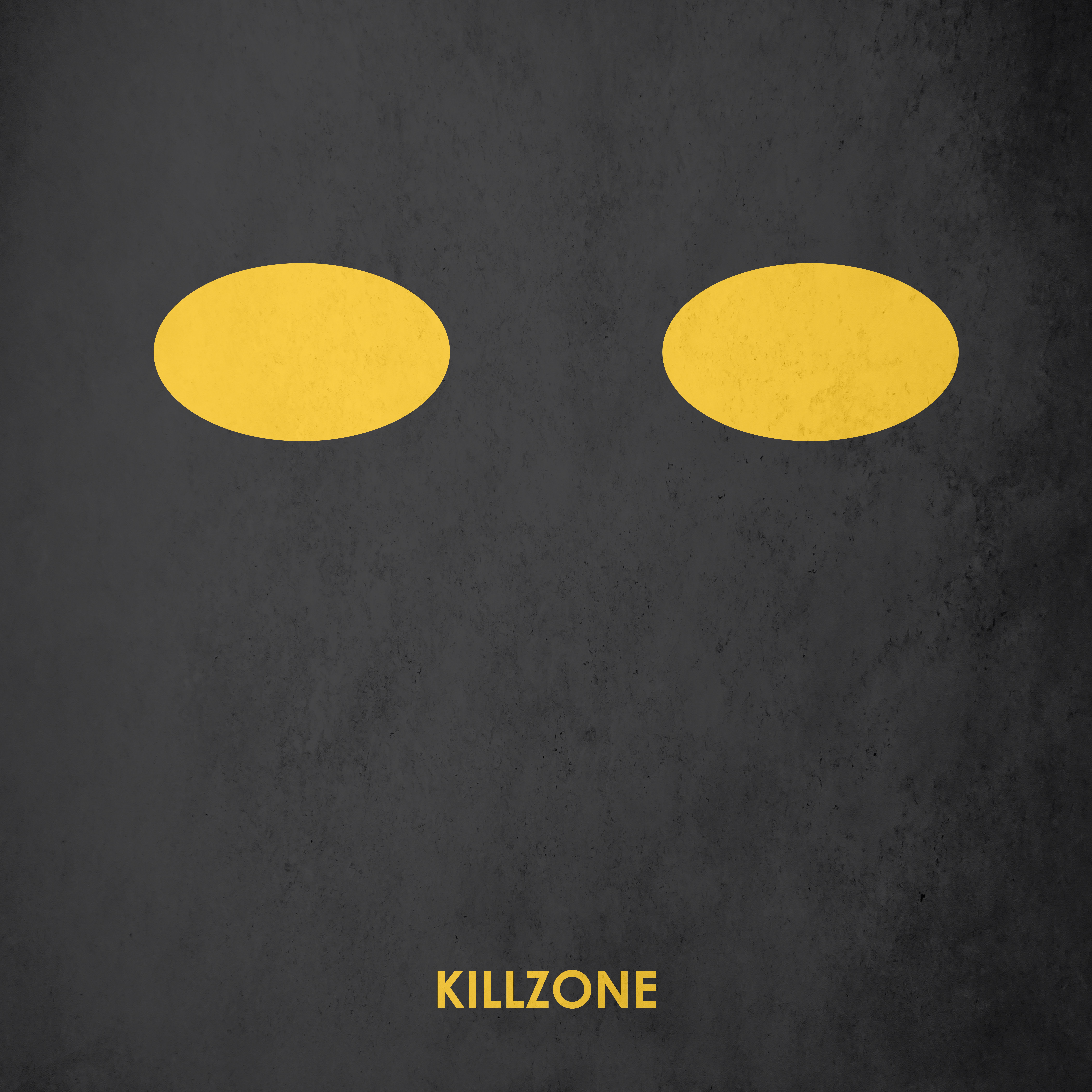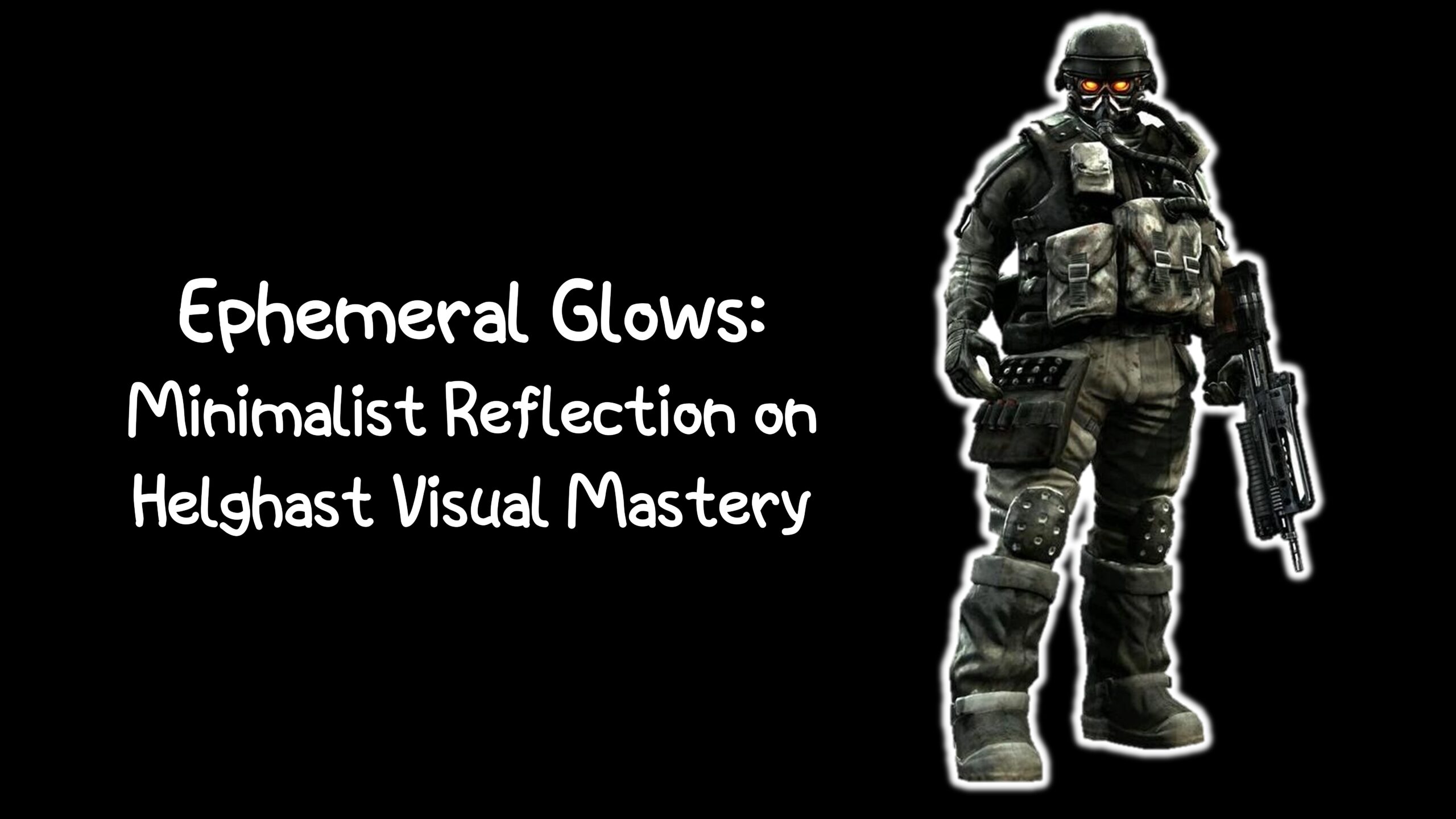Trudging through the battle-scared streets of the slums of Vekta, the atmosphere is thick with tension, the ruins echo a once thriving city. I can feel the weight of the mini-gun as it swings on it’s gyro mounted support and locks into place. A Behemoth of destruction ready to unleash chaos on any Helghast soldier that dares to cross my path.
Overhead the groaning engines of a Helghast Gunship herald an ominous descent. Four ropes drop to the ground delivering an entire platoon of Helghast soldiers. I pull the trigger on the chain-gun and hear the violent scream of a hail of bullets escape it’s barrel, the first three cut to pieces in seconds, the muffled gas-masked screams of the survivors “we’re taking losses” affirms my hits were true.

The gunplay in Killzone wasn’t just a show—it was a visceral experience. The controller’s vibration synchronized with on-screen firing and reloading, creating tangible feedback. The weapons so detailed they were characters themselves, ejecting brass casings, producing loud, satisfying gunfire, and featured meticulously animated reload animations. This combination of sound, touch, and visual elements formed a sensory overload, transforming the act of pulling the trigger into an immersive encounter with the weight and feel of warfare. In “Killzone,” the gameplay was more than a spectacle; it was a symphony of sensations that lingered long after the controller was set down, but it was Helghast themselves that became the defining icon of the Killzone series.
The Thousand-Yard-Stare of a Helghast Soldier
The Helghast soldier’s piercing stare transcends the mere realm of gameplay; it becomes a symbolic embodiment of the Killzone series. The antagonistic Helghast, with their iconic features, overshadow even the protagonists in terms of recognizability and memorability. Delving into the lore of Killzone reveals the roots of their distinct aesthetic—the gas masks, initially a pragmatic response to Helghan’s toxic environment, evolved into symbols of respect and strength among the Helghast people.

Yet, it is the eyes that elevate the Helghast soldier to an unforgettable status within the game. Originally designed to shield the Helghast from their planet’s harsh winds, the glowing embers of their eyes serve a dual purpose. From a gameplay perspective, this distinct visual cue allows players to identify the enemy in Killzone’s stark and dilapidated universe. Aesthetically, the sterile orange tint of their goggles imparts a paranormal and demon-like quality, instilling fear in the player and enhancing the atmospheric tension.

In crafting the minimalist art, I deconstructed the layers of Helghast armor, stripping away the slanted angular helmet, the gas mask, and the Helghast insignia. What remained was the jet black uniform and those mesmerizing, almost ethereal, orange eyes. This process highlights the enduring power of character design, showcasing how the smallest details can etch themselves into a player’s memory, ensuring the Helghast’s haunting gaze lives on as a testament to exceptional game design of the pioneering teams of Guerrilla Games.

